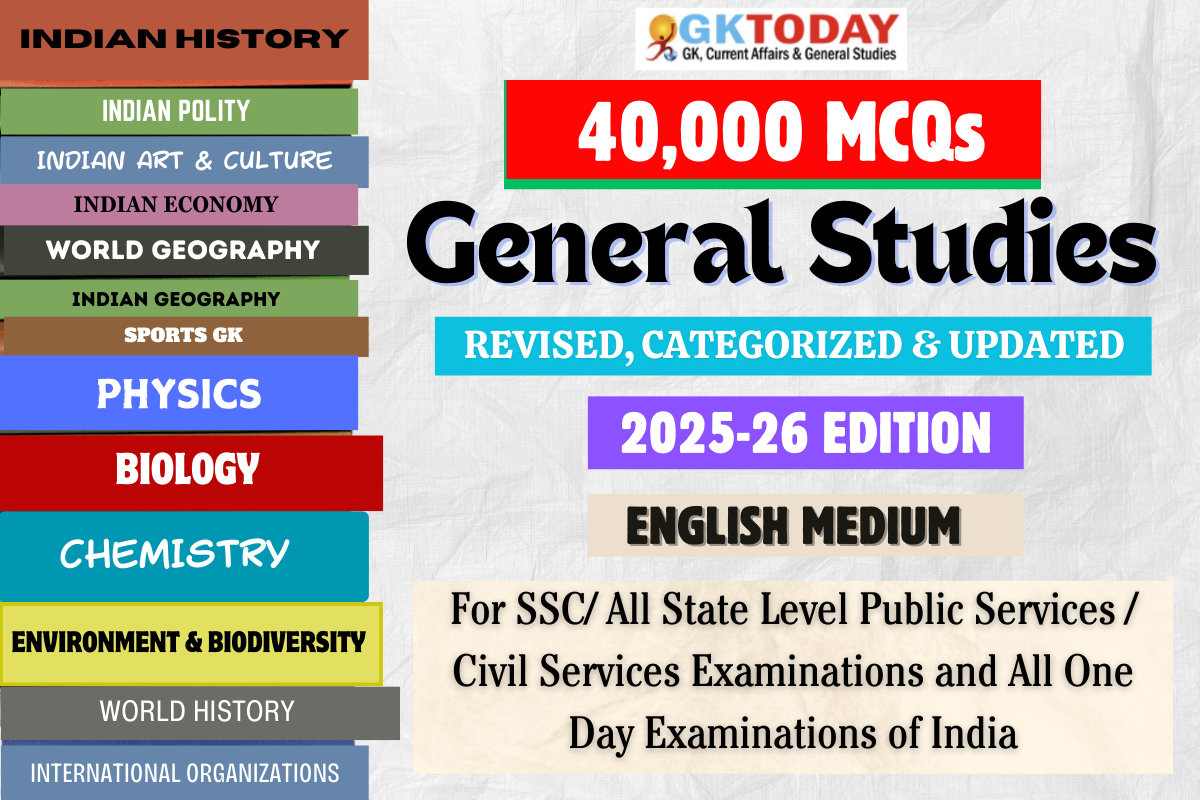Indian Economy MCQs
Indian Economy Multiple Choice Questions (MCQs) for SSC, State and all One Day Examinations of India. Objective Questions on Indian Economy for competitive examinations.
41. Which is the largest container port in India?
[A] Visakhapatnam
[B] Jawaharlal Nehru Port Trust
[C] Paradip
[D] Chennai
Show Answer
Correct Answer: B [Jawaharlal Nehru Port Trust]
Notes:
Jawaharlal Nehru Port Trust is the largest container port in India. It is the largest Artificial port.
42. Which of the following is called the demand for labor?
[A] Market demand
[B] Direct demand
[C] Derived demand
[D] Factory demand
Show Answer
Correct Answer: C [Derived demand]
Notes:
The demand for labor is produced and “derived” from the demand for the product being demanded. If the demand for the product increases. Either the price will rise or the demand for producing labor will increase until the equilibrium price and production number are met. Labor is “derived” from market demand for the product.
43. Perfectly inelastic demand is equal to:
[A] One
[B] Infinite
[C] Zero
[D] Greater than one
Show Answer
Correct Answer: C [Zero]
Notes:
Price elasticity of demand is a measure of the relationship between a change in the quantity demanded of a particular commodity and a change in its price. If the price elasticity of demand is equal to 0, then demand is perfectly inelastic.
44. Which statement is wrong for a country with inflationary condition?
[A] Cost of living rises
[B] Profit rise faster than wages
[C] Value of money falls
[D] Country’s exports become more competitive
Show Answer
Correct Answer: D [Country’s exports become more competitive]
Notes:
Inflation is a rise in the general level of prices of goods and services in an economy over a period of time. When the general price level rises, each unit of currency buys fewer goods and services which results in a loss of value of money. In such a situation, the cost rises. Thus an increase in inflation decreases exports and has a negative effect on the balance of payments hence, exports become less competitive.
45. For economists, which refers to the quantity of a product or service that people are both willing and able to buy?
[A] demand
[B] supply
[C] price
[D] income
Show Answer
Correct Answer: A [demand]
Notes:
Demand to refer to the amount of some goods or service that consumers are willing and able to purchase at each price. A rise in the price of a goods or service decreases the demand. Conversely, a fall in price will increase the demand.
46. HDI is an overall measure of progress in which of the three dimensions?
[A] Health, Education, Income
[B] Food Security, Employment, Income
[C] Agriculture, Industry, Services
[D] Height, Weight, Colour
Show Answer
Correct Answer: A [Health, Education, Income]
Notes:
The Human Development Index (HDI) is a composite measure of progress in three dimensions—health, education, and income—used to rank countries across four levels of human development. HDI was developed by Pakistani economist Mehboob-ul-Haq in collaboration with Indian economist Amartya Sen.
47. Who fixes the Minimum Support Price (MSP) for agricultural crops in India?
[A] Ministry of Agriculture
[B] NABARD
[C] Commission on Agriculture Cost and Price (CACP)
[D] Ministry of Commerce
Show Answer
Correct Answer: C [Commission on Agriculture Cost and Price (CACP)]
Notes:
The Minimum Support Price is announced by the Government of India at the beginning of the sowing season for certain crops based on the recommendations of the Commission for Agricultural Costs and Prices (CACP). MSP is the price fixed by the government to protect the producer-farmers from sharp fall in prices during bumper production years.
48. What are gilt–edged securities?
[A] Securities issued by the multinational companies.
[B] Securities issued by the Government
[C] Securities issued by the private sector
[D] Securities issued by the joint venture companies
Show Answer
Correct Answer: B [ Securities issued by the Government
]
Notes:
Gilt-edge securities are bonds issued by governments. They are government securities, i.e., instruments issued by the government to borrow money from the market
49. Pegging a currency means fixing the value of a currency:
[A] at a constant level
[B] at a lower level
[C] at a higher level
[D] leaving it to market force
Show Answer
Correct Answer: A [at a constant level]
Notes:
Currency pegging is the idea of fixing the exchange rate of one currency to the value of another single currency or a basket of other currencies, or by matching it to another measure of value, such as gold or silver. A fixed exchange rate is usually used to stabilize the value of a currency, in relation to the currency or other value for which it is pegged.
50. Which of the following comes under the primary sector of the Indian economy?
[A] Sugar Industry
[B] Dairy
[C] Banking
[D] Transport of Goods
Show Answer
Correct Answer: B [Dairy]
Notes:
When a product is derived by exploiting natural resources, it is an activity of the Primary Sector. It is called the Primary Sector because it forms the base for all other products that are subsequently made. Dairy comes under the primary sector because it depends on the biological process of animals. The product milk is a natural product.

